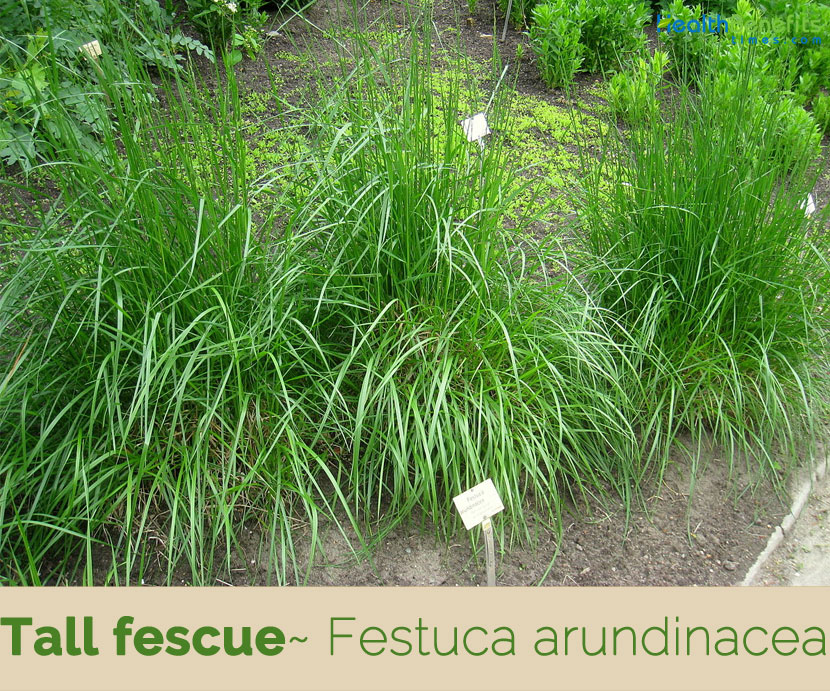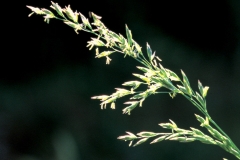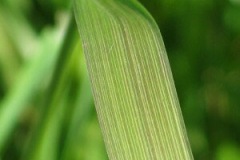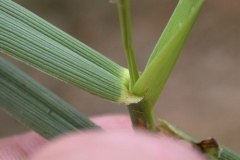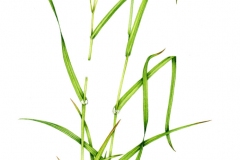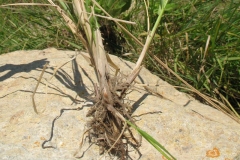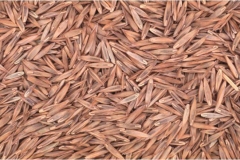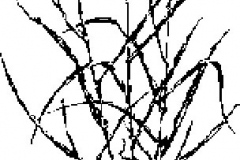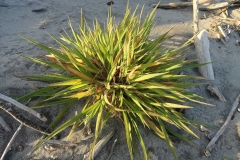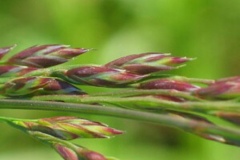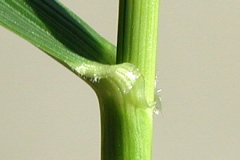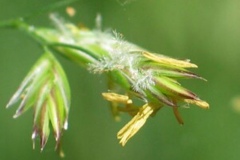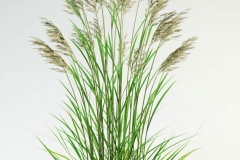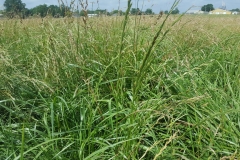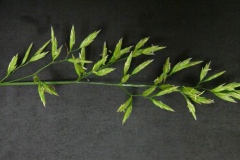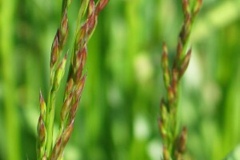| Tall fescue Quick Facts | |
|---|---|
| Name: | Tall fescue |
| Scientific Name: | Festuca arundinacea |
| Origin | Northern Africa, the Azores, all of Europe, continental United States, southern Canada, western Asia and Pakistan. |
| Shapes | 0.25 to 0.4 inch long (6 to 10 mm) and 0.04 to 0.06 inch wide (1 to 1.5 mm) at the midpoint (Seed) |
| Name | Tall fescue |
|---|---|
| Scientific Name | Festuca arundinacea |
| Native | Northern Africa (i.e. northern Algeria, northern Libya, Morocco and Tunisia), the Azores, all of Europe, continental United States, southern Canada, western Asia and Pakistan |
| Common Names | Reed fescue, alta fescue, coarse fescue, rescue, tall fescue, Kentucky fescue, New Zealand tall fescue, tall meadow fescue |
| Name in Other Languages | Albanian: Bimla si kallam, bishtpelëz, bishtpelëza si kallam Arabic: fusatawkat qasabia (فستوكة قصبية) Bulgarian: Trŭstikovidna vlasatka (тръстиковидна власатка) Catalan: Fenal, Fenàs, Fenàs d’aigua, Festuca, Festuca arundinàcia, Llistó, Pèl de cavall Chinese: wei zhuang yang mao (苇状羊茅) Croatian: Vlasulja barska, Vlasulja trstikasta, trstasta vlasulja Czech: Kostřava rákosovitá Danish: Strandsvingel, Strand-svingel Dutch: Rietzwenkgras English: Alta fescue, Reed fescue, Tall fescue, coarse fescue, Kentucky fescue Estonian: Roog-aruhein Finnish: Ruokonata French: Fétuque élevée, Fétuque faux roseau, Fétuque roseau German: Rohrschwingel, Rohr-Schwingel, großer Schwingel, Uechtritz-Rohr-Schwingel, Greek: Festoúka ypsilí (Φεστούκα υψηλή), Festoúka i kalamoeidís (Φεστούκα η καλαμοειδής) Hebrew: Ben afar matzuy, בן-אפר מצוי, בֶּן=אֲפָר מָצוּי Hungarian: Nàdas csenkesz, nádképű csenkesz, Nádképű csenkesz alfaja Italian: Festuca falascona, festuca arundinacea, festuca alta, festuca falsa canna, Japanese: Oni ushi no kegusa (オニウシノケグサ), Tōrufesuku (トールフェスク) Latvian: Festuca falsa canna Lithuanian: Nendrinis eraičinas Maltese: Żwien Netherlands: Rietzwenkgras Norwegian: Strandsvingel Occitan: Bramarello Polish: Kostrzewa trzcinowa Portuguese: Erva-corneira, Festuca-alta, erva-carneira Russian: Ovsianitsa trostnikovaia (Овсяница тростниковая), ovsyanitsa trostnikovidnaya (овсяница тростниковидная), ovsyanichnik trostnikovyy (овсяничник тростниковый) Serbian: Visoka vlasul̂a (висока власуља) Slovak: Kostrava trsťovitá Slovenian: Trstikasta bilnica Spanish: Cañuela alta, Cañuela descollada, Festuca alta, Festuca canosa, Festuca descollada, zacate fescue, cañuela, festuca canosa, lastón Swedish: Rörsvingel, Strandsvingel Turkish: Kamışsı yumak Ukrainian: kostrytsya ocheretyana (костриця очеретяна), костриця східна (костриця східна) |
| Plant Growth Habit | Cool season, densely cespitose to short-rhizomatous, long-lived, aggressive perennial grass |
| Growing Climates | Heathland, woodland, riparian habitats, freshwater, saline wetlands, moist forests, reed swamps, riparian habitats, seashores, meadows, salt marshes, cliff tops, moist grassland, reed swamps, coastal scrub, roadsides, ditches, grazed woods and railroad tracks |
| Soil | Grows best on deep, moist soils that are heavy to medium in texture and high in organic matter. It can grow under conditions ranging from excessively drained to poorly drained, and can tolerate long periods of flooding |
| Plant Size | Up to 6 ft. (1.8 m) |
| Root | Roots are tough and coarse and can penetrate moist soils to a depth of 150 cm, some varieties may have short rhizomes |
| Stem | Erect stems are hollow and can be up to 2 m tall and end in a broad, loosely branched panicle with variations that can be narrow with short branches 10 to 35 cm long |
| Leaf | Mostly basal, flat, 4 to 18 in. (10.2-45.7 cm) long with whitish to yellow-green, flared collars. The mid vein is not noticeable |
| Flowering season | June-July |
| Flower | Inflorescence is paniculate, open, 13–3 cm long, to 6 cm wide, rachis smooth, occasionally scabrous, glabrous. Spikelets is 10–17 mm long, to 8 mm wide, florets 4–8, uppermost floret often ruduced |
| Fruit Shape & Size | Fruit is a caryopsis |
| Seed | About 5 to 7 seeds are produced per spikelet. |
| Propagation | By seed and increases vegetative |
Plant Description
Tall fescue is a cool season, densely cespitose to short-rhizomatous, long-lived, aggressive perennial grass that normally grows about 6 ft. (1.8 m) tall. The plant is found growing in heathland, woodland, riparian habitats, freshwater, saline wetlands, moist forests, reed swamps, riparian habitats, seashores, meadows, salt marshes, cliff tops, moist grassland, reed swamps, coastal scrub, roadsides, ditches, grazed woods and railroad tracks. The plant grows best on deep, moist soils that are heavy to medium in texture and high in organic matter. It can grow under conditions ranging from excessively drained to poorly drained, and can tolerate long periods of flooding. Roots are tough and coarse and can penetrate moist soils to a depth of 150 cm; some varieties may have short rhizomes.
Stem
Flowering shoots produce hollow stems comprised of distinct nodes and internodes jointly called the culm. Culms usually are erect, stout, smooth, and up to 6 feet (2 m) tall. Uppermost culm segment supporting the panicle-type inflorescence is the peduncle. The stem base commonly is reddish.
Leaves
Leaves of tall fescue are rolled in the bud (rolled vernation). Blades are 0.1 to 0.5 inch (3 to 12 mm) wide and 4 to 24 inches (10 to 60 cm) long. They are prominently ridged on the upper surface and glossy on the lower surface. Leaves taper to the tip, and margins are rough and cutting to the touch. Leaf sheaths are smooth, split (overlapping at the top), and reddish at the base.
Flower
Inflorescence is paniculate, open, 13–3 cm long, to 6 cm wide, rachis smooth, occasionally scabrous, glabrous. Spikelets is 10–17 mm long, to 8 mm wide, florets 4–8, uppermost floret often ruduced; pedicels 1–5 mm long, scabrous, glabrous. Glumes are unequal, acute, awnless, membranous, smooth, and glabrous; lower lanceolate, 3–6 mm long. Upper glume is lanceolate to oblong, 5–7 mm long. Lemmas are lanceolate, 5.5–9.5 mm long, acute, or mucronate, or awned, rounded on back, upper 50% often keeled, central nerve often lightly scabrous, upper margin mambranous, smooth, glabrous, awn terminal or sub-terminal, straight, to 2.5 mm long, scabrous; callus glabrous; palea sub equal to lemma, acute or 2-toothed, 2-keeled, keels lightly scabrous, glabrous.
Seed
The lemmas have awns 0.04 to 0.16 inch long (1 to 4 mm). Seeds per pound average 220,000 (484,000 per kg), with a range of 176,000 to 261,000 per pound (387,000 to 574,000 per kg). Tall fescue seeds are 0.25 to 0.4 inch long (6 to 10 mm) and 0.04 to 0.06 inch wide (1 to 1.5 mm) at the midpoint.
Few Facts about Tall Fescue
- Tall fescue is widely used as a reliable hay, silage and pasture grass for feeding livestock.
- Tall fescue has been planted for erosion control; however it has been shown to have similar, or even lesser, effectiveness in this regard than other grass species.
- There is approximately 500,000 seeds kg-1, but this number will vary with the cultivar.
Prevention and Control
Due to the variable regulations around (de)registration of pesticides, your national list of registered pesticides or relevant authority should be consulted to determine which products are legally allowed for use in your country when considering chemical control. Pesticides should always be used in a lawful manner, consistent with the product’s label.
Eradication
Eradication of tall fescue greatly improves the opportunity to provide diverse grasslands capable of supporting more robust and healthier wildlife populations. The two methods most frequently used are herbicide application and/or conventional tillage. In choosing a method, consideration should be given to the availability of equipment, potential for soil erosion, the type of vegetation to be re-seeded, and cost.
Tall fescue is very difficult to totally eradicate. It is not always practical or necessary to remove all fescue plants. Rather, the goal should be to keep most growth suppressed so that other more beneficial and diverse vegetation types can become available to support the needs of wildlife. Once a site has been renovated, frequent mowing, deep tillage and autumn burning should be avoided as these practices will accelerate tall fescue re-infestation.
Cultural Control and Sanitary Measures
Although tall fescue is tough to eradicate without using herbicides, conventional tillage can be used for growth suppression. It is best adapted for use on non-erosive sites. The most effective method is to plough the sod in the autumn and allow the fescue rhizomes to remain exposed to freezing conditions throughout the winter months. As soon as the soil can be worked in the spring, the site should be disked down and allowed to green-up with whatever germinates. Further disking then kills off the vegetation; only the top 5-7.5 cm of the soil should be disturbed as deeper disking will only bring more fescue seed up into the germination zone. The field should be allowed to green-up again before another pass of shallow disking prior to reseeding (Indiana Division of Fish & Wildlife, 2006).
Chemical Control
Herbicides can be used for tall fescue eradication usually on any site, but are strongly recommended for use on highly erosive soils and slopes where soil disturbance may cause or exacerbate erosion problems. Another advantage is that only one passes with spraying equipment is needed in most situations. Best results are obtained by spraying when fescue plants are actively growing and are approximately 15-30 cm in height; prior to herbicide treatment, the fescue should be mowed, grazed or burned and allowed to regrow to that height. This will reduce the amount of non-target residue (dead, leafy material) and ensure the maximum exposure of new growth to herbicide contact. For sites scheduled to be reseeded to a cool-season grass/legume mixture, two applications of glyphosate are recommended (autumn and spring), while for sites to be reseeded to a warm-season grass/forb mixture, glyphosate or an imidazole herbicide such as imazapic alone or in combination can be used.
References:
https://www.itis.gov/servlet/SingleRpt/SingleRpt?search_topic=TSN&search_value=784875#null
http://www.hear.org/pier/species/festuca_arundinacea.htm
https://npgsweb.ars-grin.gov/gringlobal/taxonomydetail.aspx?id=16631
https://www.cabi.org/isc/datasheet/23983
http://www.floracatalana.net/festuca-arundinacea-schreber
https://plants.usda.gov/core/profile?symbol=SCAR7
http://www.theplantlist.org/tpl1.1/record/kew-414517
https://www.ipmimages.org/browse/subinfo.cfm?sub=3037
https://en.wikipedia.org/wiki/Festuca_arundinacea
https://www.cal-ipc.org/plants/profile/festuca-arundinacea-profile/
http://www.maltawildplants.com/POAC/Schedonorus_arundinaceus.php
https://www.invasive.org/gist/esadocs/documnts/festaru.pdf
https://gd.eppo.int/taxon/FESAR
https://www.dpi.nsw.gov.au/__data/assets/pdf_file/0008/166094/p256.pdf


